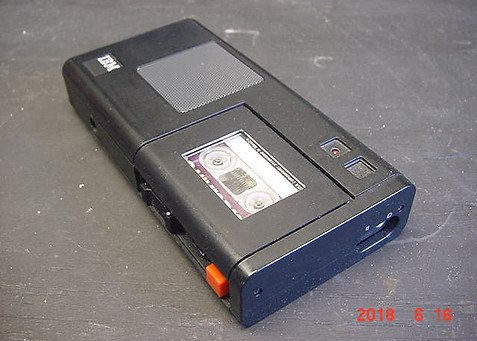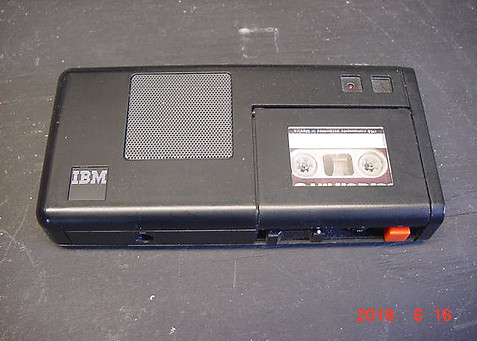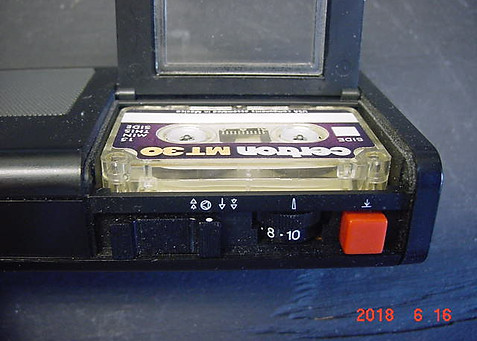
Sony TC-50
This is the Sony TC-50 cassette recorder. This unit came out in 1968, and was the smallest cassette machine produced at the time.
This model is famous as it was the model chosen by NASA to be taken aboard the command module of the Apollo moon missions.
There is a strong possibility this unit has actually been used by NASA, but not apparent in the pictures. The units used by the Apollo program (there was more than one) had a metal sticker on the front with operating instructions, as well as a special serial number stamped. The jacks were taped to make then unuseable. Velcro was affixed to the rear of the unit to facilitate the machine being stuck to the wall in the microgravity environment.
I have acquired two TC-50's. One was found at an estate sale back in 2007 or so. It was in very good cosmetic condition, but the motor had a problem that I made worse when trying to fix (it was my first attempt at a TC-50 repair). Later in 2013, I went to a now out-of-business place called "The Black Hole" in Los Alamos, New Mexico.
Ricky's Web Pages
"Once you label me, you negate me." --Søren Kierkegaard
IBM Minicassette Recorder

This is an International Business Machines (IBM) minicassette recorder (not a microcassette recorder).
The sound quality is decent for a minicassette unit, but as expected, frequency response is very narrow, with the intended purpose dictation.
The minicassette format is an interesting one, and lesser known that microcassette to the general public. Whereas the microcassette format is a capstan drive design running at either 2.4 cm/sec or 1.2 cm/sec, the minicassette is a rim-drive format with only a single speed setting. The tapes generally are only 15 minutes per side, which is not very much.
This unit actually has provisions for an external microphone and earphone, and of course possesses a built-in condenser mike.

